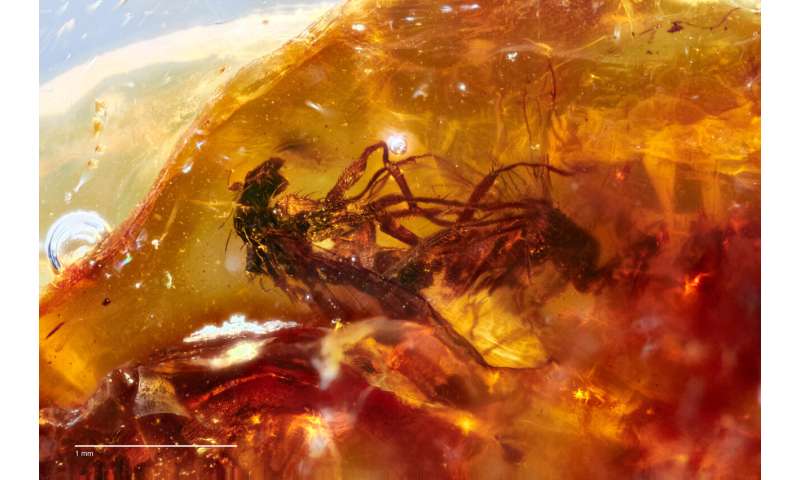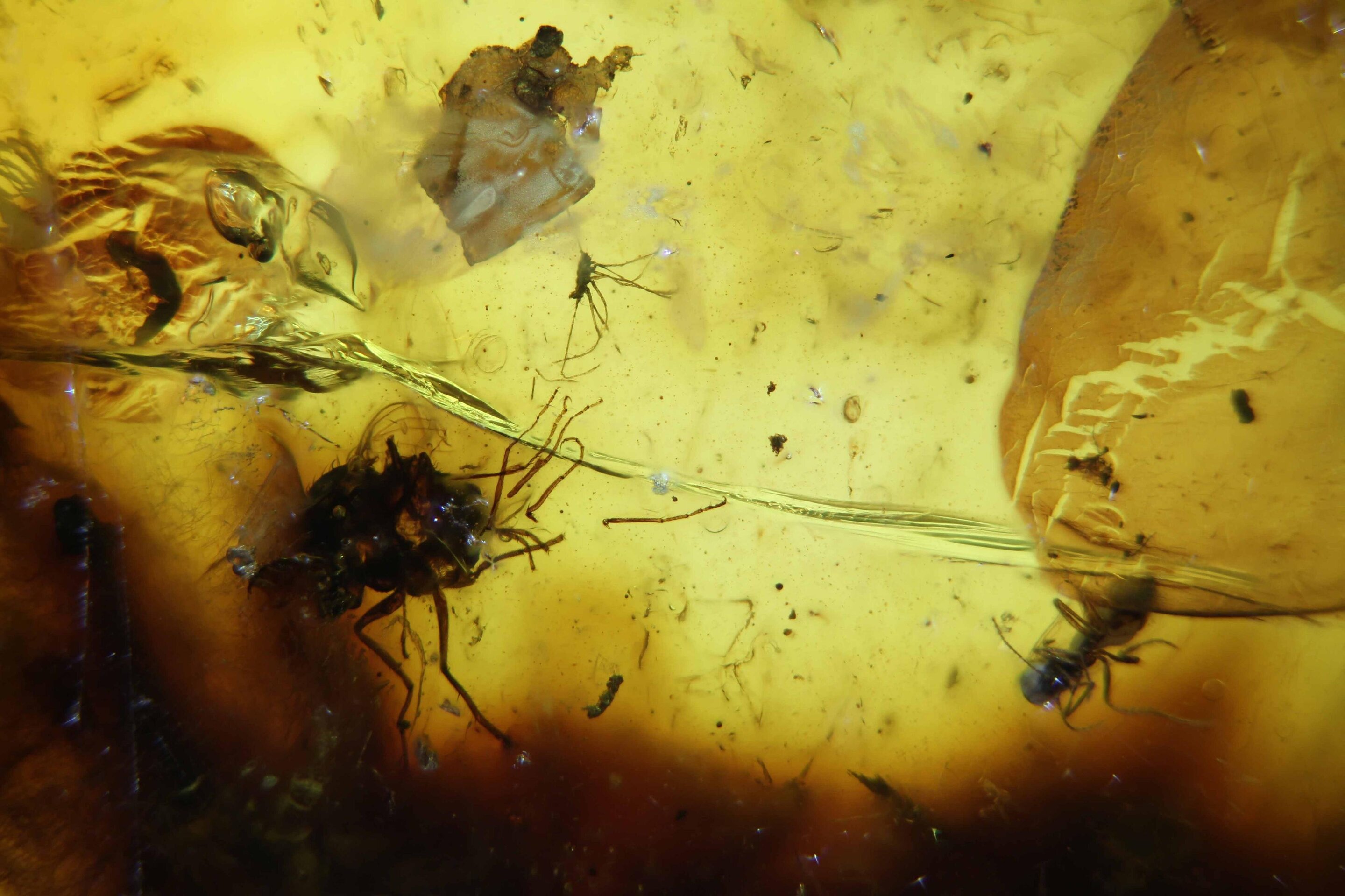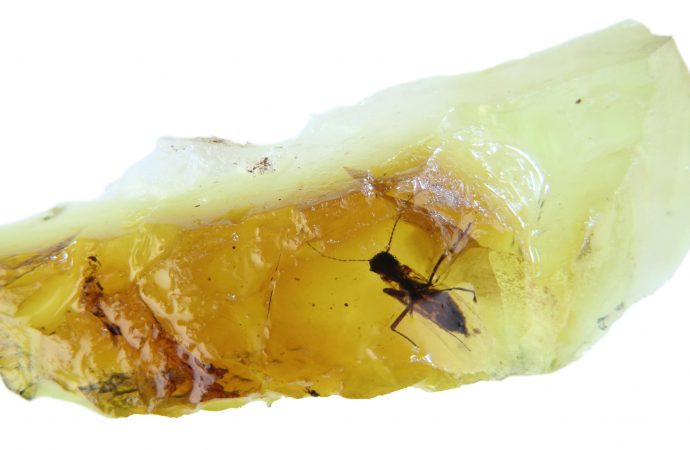The oldest known animals and plants preserved in amber from Southern Gondwana are reported in Scientific Reports this week. Gondwana, the supercontinent made up of South America, Africa, Madagascar, India, Antarctica and Australia, broke away from the Pangea supercontinent around 200 million years ago. The findings further our understanding of ecology in Australia and New Zealand during the Late Triassic to mid-Paleogene periods (230-40 million years ago).
Source: Phys.org
Jeffrey Stilwell and colleagues studied more than 5,800 amber pieces from the Macquarie Harbour Formation in Western Tasmania, dating back to the early Eocene Epoch (~54-52 million years ago) and Anglesea Coal Measures in Victoria, Australia, from the late middle Eocene (42-40 million years ago). The authors report a rare “frozen behaviour” of two mating long-legged flies (Dolichopodidae). The specimens also include the oldest known fossil ants from Southern Gondwana and the first Australian fossils of ‘slender springtails’, a tiny, wingless hexapod. Other organisms preserved in the amber include a cluster of juvenile spiders, biting midges (Ceratopogonidae), two liverwort and two moss species.
The authors also studied deposits found at locations in southeastern Australia, Tasmania and New Zealand. These include the oldest reported amber from Southern Pangea dating back to 230 million years ago, 96-92 million year old deposits from forests near the South Pole and an intact fossil of an insect called a felt scale (Eriococcidae) from 54-52 million years ago.

The findings provide new insights into the ecology and evolution of Southern Gondwana and indicate that there may be a vast potential for future, similar finds in Australia and New Zealand.

Source: Phys.org

































Leave a Comment
You must be logged in to post a comment.